Charles John Huffam Dickens 7 February 1812 Portsmouth,

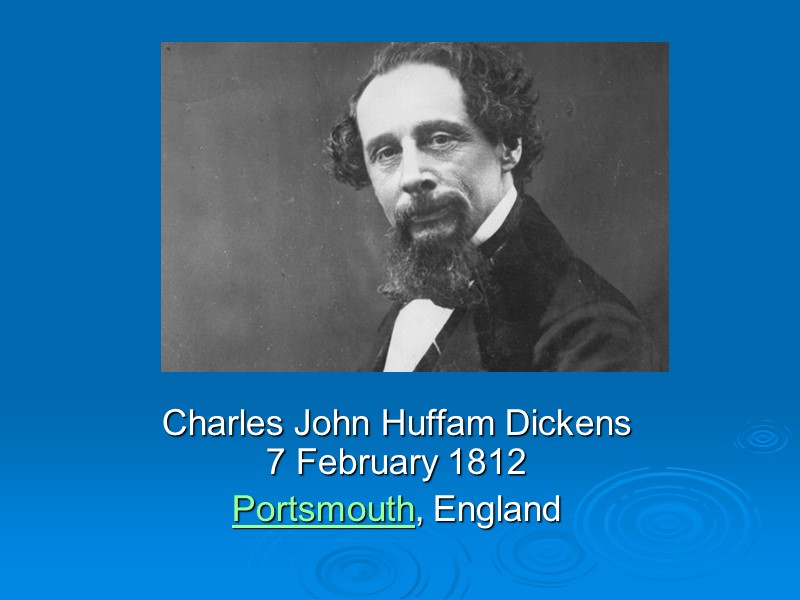
Charles John Huffam Dickens 7 February 1812 Portsmouth, England
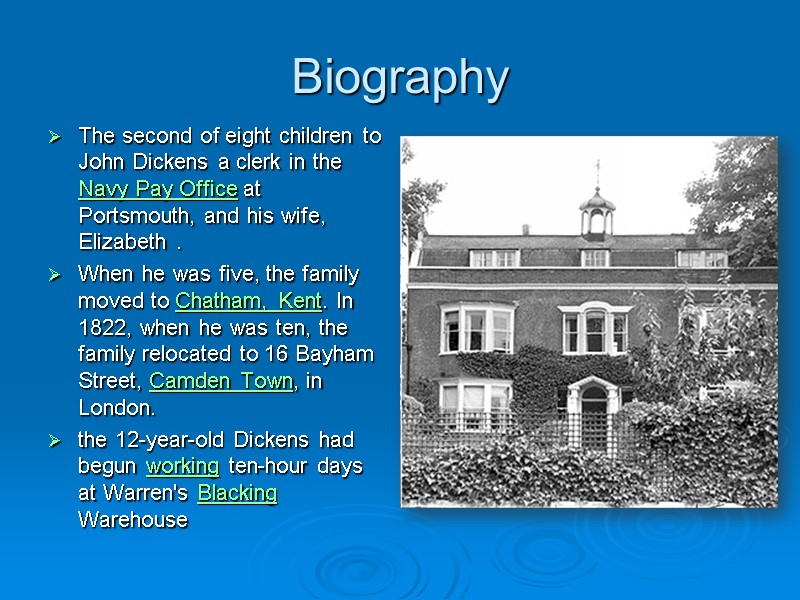
Biography The second of eight children to John Dickens a clerk in the Navy Pay Office at Portsmouth, and his wife, Elizabeth . When he was five, the family moved to Chatham, Kent. In 1822, when he was ten, the family relocated to 16 Bayham Street, Camden Town, in London. the 12-year-old Dickens had begun working ten-hour days at Warren's Blacking Warehouse
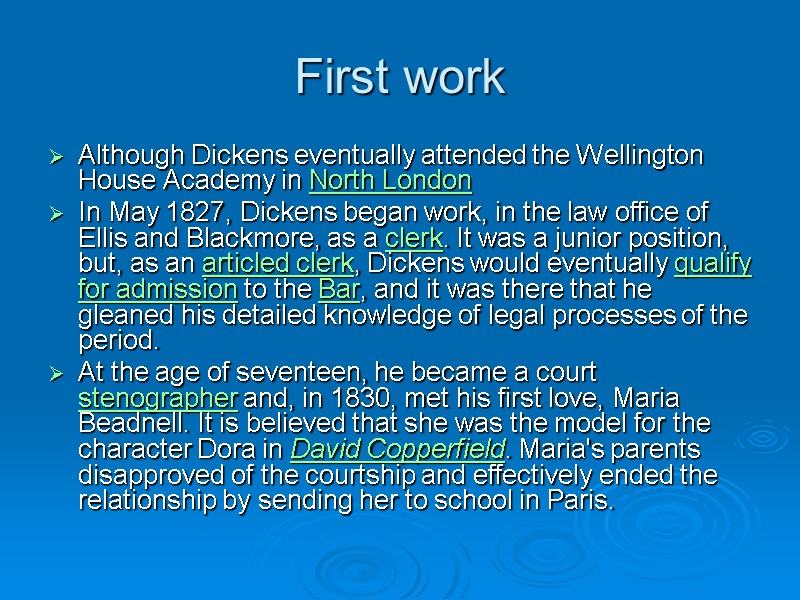
First work Although Dickens eventually attended the Wellington House Academy in North London In May 1827, Dickens began work, in the law office of Ellis and Blackmore, as a clerk. It was a junior position, but, as an articled clerk, Dickens would eventually qualify for admission to the Bar, and it was there that he gleaned his detailed knowledge of legal processes of the period. At the age of seventeen, he became a court stenographer and, in 1830, met his first love, Maria Beadnell. It is believed that she was the model for the character Dora in David Copperfield. Maria's parents disapproved of the courtship and effectively ended the relationship by sending her to school in Paris.
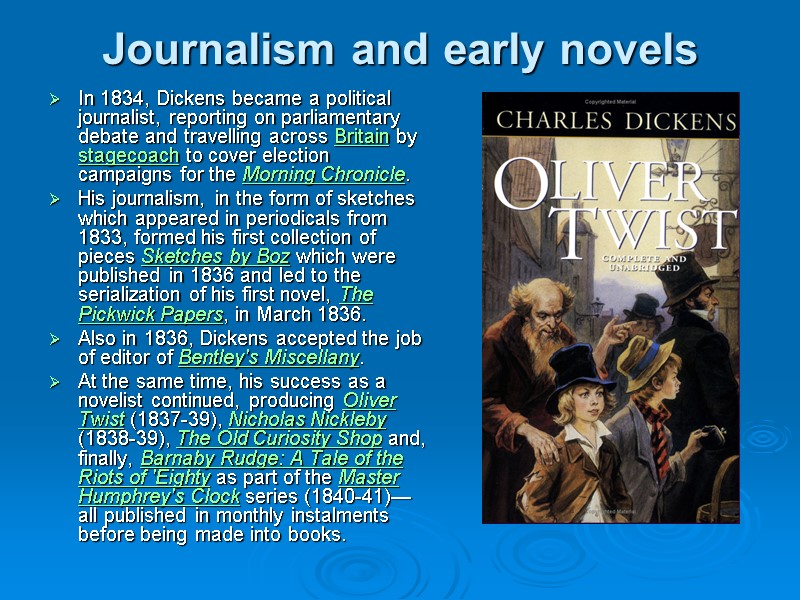
Journalism and early novels In 1834, Dickens became a political journalist, reporting on parliamentary debate and travelling across Britain by stagecoach to cover election campaigns for the Morning Chronicle. His journalism, in the form of sketches which appeared in periodicals from 1833, formed his first collection of pieces Sketches by Boz which were published in 1836 and led to the serialization of his first novel, The Pickwick Papers, in March 1836. Also in 1836, Dickens accepted the job of editor of Bentley's Miscellany. At the same time, his success as a novelist continued, producing Oliver Twist (1837-39), Nicholas Nickleby (1838-39), The Old Curiosity Shop and, finally, Barnaby Rudge: A Tale of the Riots of 'Eighty as part of the Master Humphrey's Clock series (1840-41)—all published in monthly instalments before being made into books.
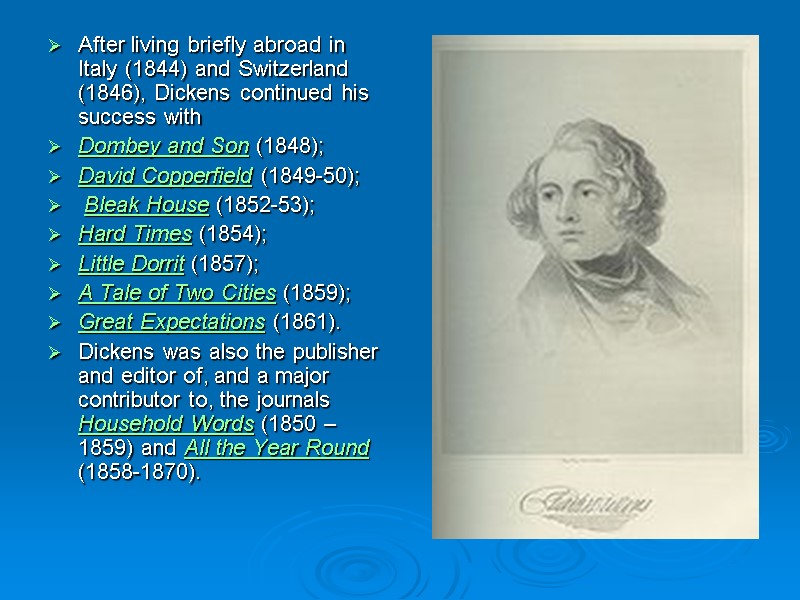
After living briefly abroad in Italy (1844) and Switzerland (1846), Dickens continued his success with Dombey and Son (1848); David Copperfield (1849-50); Bleak House (1852-53); Hard Times (1854); Little Dorrit (1857); A Tale of Two Cities (1859); Great Expectations (1861). Dickens was also the publisher and editor of, and a major contributor to, the journals Household Words (1850 – 1859) and All the Year Round (1858-1870).
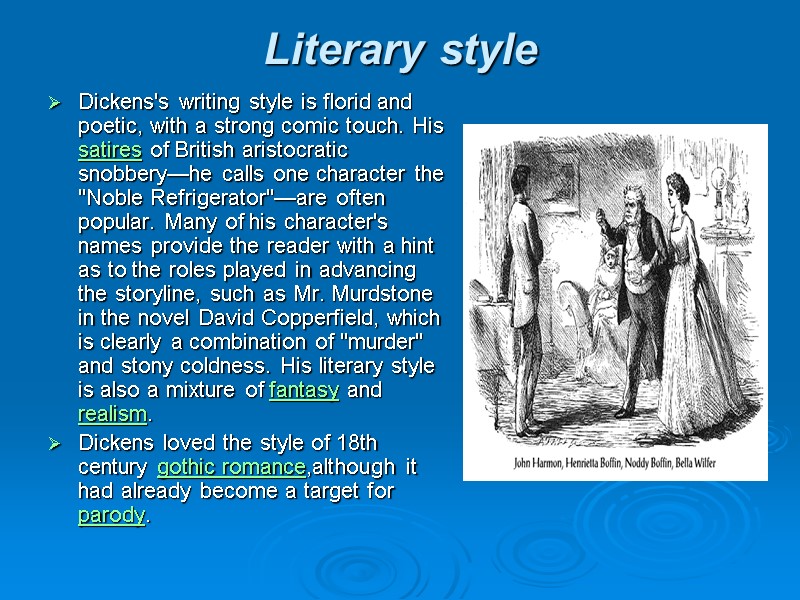
Literary style Dickens's writing style is florid and poetic, with a strong comic touch. His satires of British aristocratic snobbery—he calls one character the "Noble Refrigerator"—are often popular. Many of his character's names provide the reader with a hint as to the roles played in advancing the storyline, such as Mr. Murdstone in the novel David Copperfield, which is clearly a combination of "murder" and stony coldness. His literary style is also a mixture of fantasy and realism. Dickens loved the style of 18th century gothic romance,although it had already become a target for parody.
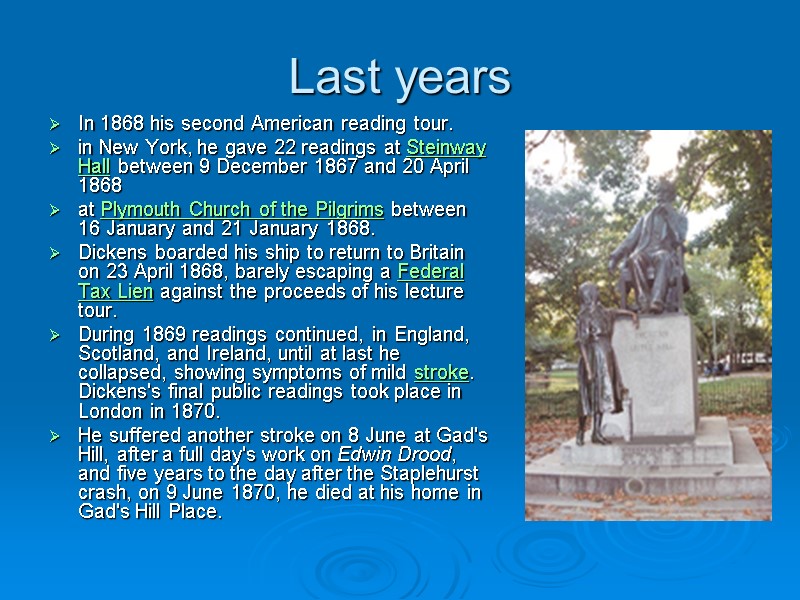
Last years In 1868 his second American reading tour. in New York, he gave 22 readings at Steinway Hall between 9 December 1867 and 20 April 1868 at Plymouth Church of the Pilgrims between 16 January and 21 January 1868. Dickens boarded his ship to return to Britain on 23 April 1868, barely escaping a Federal Tax Lien against the proceeds of his lecture tour. During 1869 readings continued, in England, Scotland, and Ireland, until at last he collapsed, showing symptoms of mild stroke. Dickens's final public readings took place in London in 1870. He suffered another stroke on 8 June at Gad's Hill, after a full day's work on Edwin Drood, and five years to the day after the Staplehurst crash, on 9 June 1870, he died at his home in Gad's Hill Place.
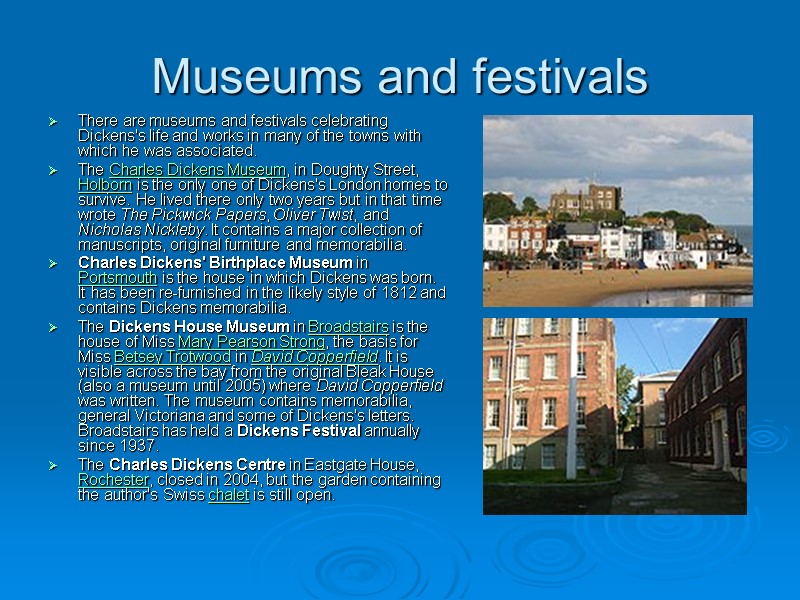
Museums and festivals There are museums and festivals celebrating Dickens's life and works in many of the towns with which he was associated. The Charles Dickens Museum, in Doughty Street, Holborn is the only one of Dickens's London homes to survive. He lived there only two years but in that time wrote The Pickwick Papers, Oliver Twist, and Nicholas Nickleby. It contains a major collection of manuscripts, original furniture and memorabilia. Charles Dickens' Birthplace Museum in Portsmouth is the house in which Dickens was born. It has been re-furnished in the likely style of 1812 and contains Dickens memorabilia. The Dickens House Museum in Broadstairs is the house of Miss Mary Pearson Strong, the basis for Miss Betsey Trotwood in David Copperfield. It is visible across the bay from the original Bleak House (also a museum until 2005) where David Copperfield was written. The museum contains memorabilia, general Victoriana and some of Dickens's letters. Broadstairs has held a Dickens Festival annually since 1937. The Charles Dickens Centre in Eastgate House, Rochester, closed in 2004, but the garden containing the author's Swiss chalet is still open.
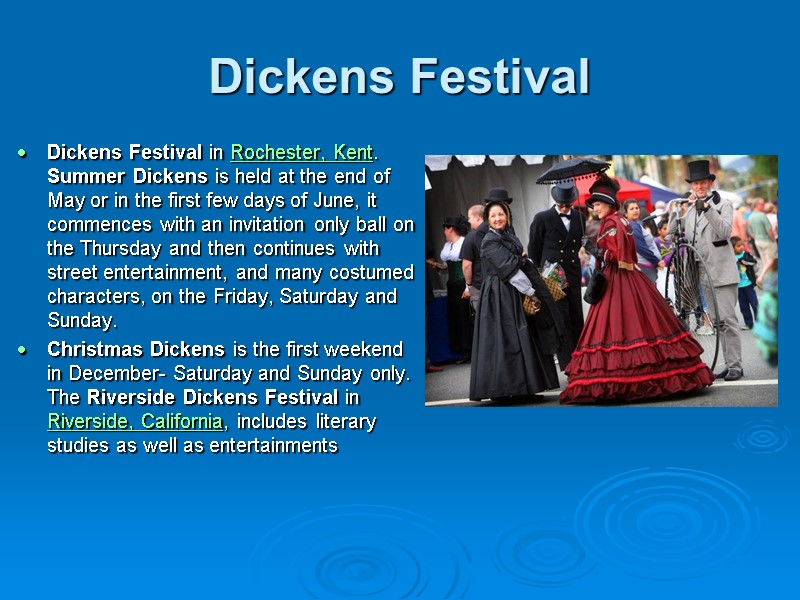
Dickens Festival Dickens Festival in Rochester, Kent. Summer Dickens is held at the end of May or in the first few days of June, it commences with an invitation only ball on the Thursday and then continues with street entertainment, and many costumed characters, on the Friday, Saturday and Sunday. Christmas Dickens is the first weekend in December- Saturday and Sunday only. The Riverside Dickens Festival in Riverside, California, includes literary studies as well as entertainments
23854-charles_dickens.ppt
- Количество слайдов: 9

